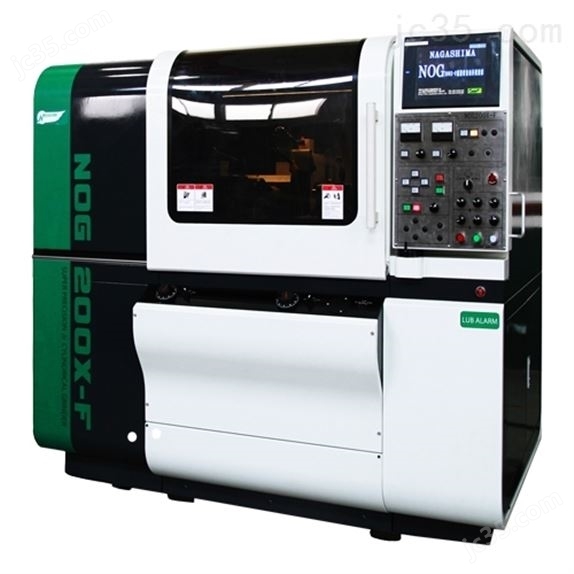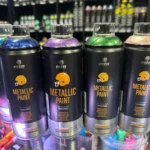The Pinnacle of Perfection: Engineering Excellence in Ultra-Precision Surface Grinding
In the relentless pursuit of perfection that defines modern manufacturing, ultra-precision surface grinders stand as the undisputed workhorses of micron-level accuracy. These machines are not merely tools; they are sophisticated technological ecosystems where every component, from the foundational bedrock to the environmental cocoon, dictates the boundary between acceptable and extraordinary. Mastering their intricate requirements is the gateway to producing components that define the pinnacle of quality in aerospace, optics, semiconductors, and beyond.
I. Structural Integrity: The Unshakeable Foundation
Imagine demanding submicron accuracy from a machine trembling under its own stress. Impossible. This is why structural rigidity and thermal stability are non-negotiable pillars of ultra-precision grinders.
- The Bedrock: The massive machine bed isn’t just heavy; it’s strategically engineered. Typically crafted from high-grade cast iron (like Meehanite) or specially formulated, low-coefficient-of-expansion polymer granites, it undergoes prolonged stress-relieving and natural aging processes. This meticulous preparation minimizes inherent stresses, preventing microscopic warping over time that could accumulate into significant dimensional drift.
- Guide Rails: Precision Highways: Whether employing ultra-low-friction roller guides, hydrostatic systems (where a pressurized fluid film eliminates metal-to-metal contact), or air bearings near the nanotechnology frontier, the guiding surfaces are marvels unto themselves. Achieving and maintaining surface flatness and straightness within fractions of a micron is paramount. Surface hardening (like nitriding), lapping to mirror finishes, and extreme hardness ensure minimal wear over millions of cycles, guaranteeing unwavering movement repeatability for the workpiece carriage and grinding head.
- The Heartbeat: Spindles: The spindle is where the cutting action meets precision. These are no ordinary rotating shafts. Built for exceptional radial and axial stiffness, they utilize ultra-precision angular contact ball bearings, hydrodynamic/hydrostatic bearings, or even magnetic bearings. Balancing reaches extraordinary levels (G0.4 or finer), and rotational accuracy is measured in nanometers of runout at critical interfaces. Power density must be high enough for demanding cuts without compromising stability through excessive vibration or thermal growth.
II. Grinding System Mastery: Sculpting at the Atomic Scale
The grinding wheel becomes the sculptor’s chisel, operating at scales where individual atom removal matters. Precision here translates directly to surface topology.
- Abrasive Alchemy: Diamond (for non-ferrous materials, ceramics, glass) and Cubic Boron Nitride (CBN, for hardened steel and superalloys) are the dominant superabrasives. Their particle selection isn’t random:
- Grit Size: Dictates achievable surface finish. Finer grits (submicron diamond) yield smoother surfaces but remove material slower. Particle size distribution is tightly controlled.
- Concentration: The density of abrasive grains in the bond. Lower concentrations enhance chip clearance during fine finishing but reduce wear resistance.
- Bond System: Resin, vitrified, or metal bonds are chosen based on required sharpness, dressability, coolant compatibility, and longevity. Hybrid bonds (e.g., metal-resin) optimize performance for specific tasks.
- Dressing Science: Defining the Edge: A perfect wheel becomes blunt through use. Precision dressing is essential for restoring the wheel’s form and exposing sharp cutting edges. Advanced techniques like:
- Rotary Diamond Form Dressing: Uses profiled diamond disks to profile the wheel face and dislodge dulled grits with minimal impact on the bond.
- CNC Plunge and Traverse Dress: Enables complex wheel geometries and highly controlled radial infeed for consistent peripheral dressing.
- Specialized Dressing: Electro-contact discharge dressing for vitrified bonds, or laser dressing on the horizon, are pushing boundaries. The goal is always clarity of grit and inherent form precision on the wheel periphery.
- Coolant & Filtration: Silent Guardians: Modern ultra-precision grinding relies heavily on optimized coolant:
- Filtration: Multi-stage filtration (magnetic separators, paper bands, ceramic membranes) is essential to remove sub-micron abrasive particles and swarf. Clean coolant prevents part scratching ("drag scratching") and lubricates efficiently. Filtration down to 1 micron or less is common.
- Precision Delivery: High-pressure coolant jets, precisely aimed at the grinding zone, provide critical cooling and flushing. Effective thermal management minimizes part distortion and prevents "grinding burn," especially critical on heat-sensitive materials. Advanced systems control flow rates, pressures, and nozzle positioning dynamically.
III. Control & Automation: The Brain and Nervous System
Maintaining control over nanometers requires sensory perception and computational prowess operating at unparalleled scales.
- Nanoscale Sensory Feedback: Linear encoders (interferometric laser scales are gold standard) directly mounted to moving components provide real-time position feedback with sub-nanometer resolution (< 0.1 nm achievable). Concurrently, high-resolution rotary encoders monitor spindle rotation and position. Vibration and thermal sensors constantly feed data for active compensation.
- Advanced CNC Intelligence: Ultra-precision systems run specialized CNC platforms capable of complex kinematic models and high-speed data processing. Key capabilities:
- Predictive Error Compensation: Real-time adjustment based on temperature drift signals, predicted force-induced deformations from load cells, and even weather forecast data for long-running jobs.
- Complex Path Planning & Interpolation: Generating smooth, high-accuracy toolpaths for intricate geometries (e.g., optical aspheres), incorporating dynamic feedrate adjustments based on varying engagement.
- Adaptive Control: Monitoring grinding power or acoustic emissions to detect wheel dulling, changes in material hardness, or coolant inefficiency, and automatically modifying parameters.
- AI/ML Integration (Emerging): Utilizing historical process data for predictive maintenance, optimization, and anomaly detection.
IV. Environmental Sanctum: Creating a Cocoon for Precision
Ultra-precision grinding treads where ambient disturbances spell disaster. Environmental mastery is not optional.
- Thermal Equilibrium: A dedicated constant-temperature room (+/- 0.1°C stability or better) is standard. Sensitive instruments are often housed within dual-layered thermo-stable chambers. Machine components may feature internal cooling channels. Laboratory-grade air conditioning units recirculate filtered air at extremely stable temperatures.
- The War Against Vibration: Foundations incorporate massive inertia blocks. Machines float on sophisticated active or passive vibration isolators (active systems using voice coils counteract minute ground vibrations sensed by seismometers). Machinery within the workshop producing lower-frequency vibrations might have separate, isolated foundations served by "anti-vibration trenches."
- Cleanroom Principles: While not necessarily semiconductor cleanroom classifications (Class 1000 or ISO 6 common), stringent air filtration (HEPA/ULPA) drastically reduces airborne particulates. Positive pressure and strict protocols minimize contamination. Even operator movement and electrostatic discharge are controlled factors. This prevents fine dust from adhering to critical surfaces or contaminating the grinding interface.
V. The Convergence of Genius
The technical demands placed on ultra-precision flat grinders represent the zenith of integrated engineering. It’s a relentless pursuit of stability, fidelity, and control demanding excellence across material science, tribology, mechatronics, control theory, and environmental engineering. Each advancement – whether in nanometer-scale position sensing, novel low-CTE material formulation, smarter AI-assisted process optimization, or cleaner filtration – pushes the boundary of what’s manufacturable.
These machines are the silent guarantors of the sophisticated technologies shaping our world. Their unparalleled precision ensures the aerodynamic perfection of turbine blades, the flawless curvature of optical lenses transmitting data at light speed, the critical geometric tolerances in microelectronic packaging, and the bearing races enabling frictionless space mechanisms. Investing in their mastery isn’t just buying equipment; it’s embracing a philosophy of perfection that defines leadership at the absolute forefront of precision manufacturing. The quest continues, measured in microns conquered and nanometers yet to tame. The journey to perfect surfaces demands nothing less.

















